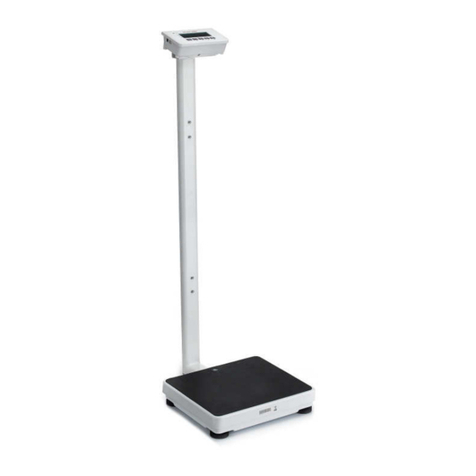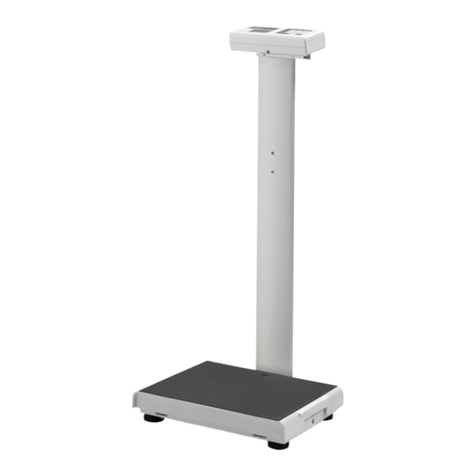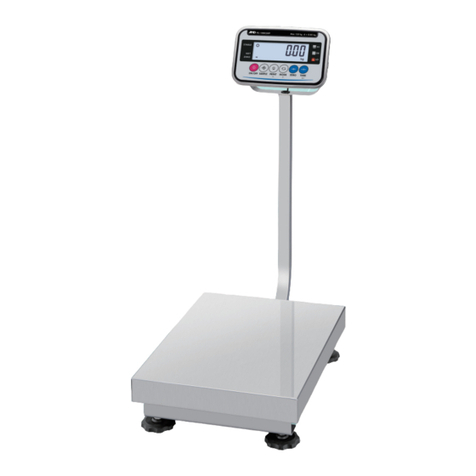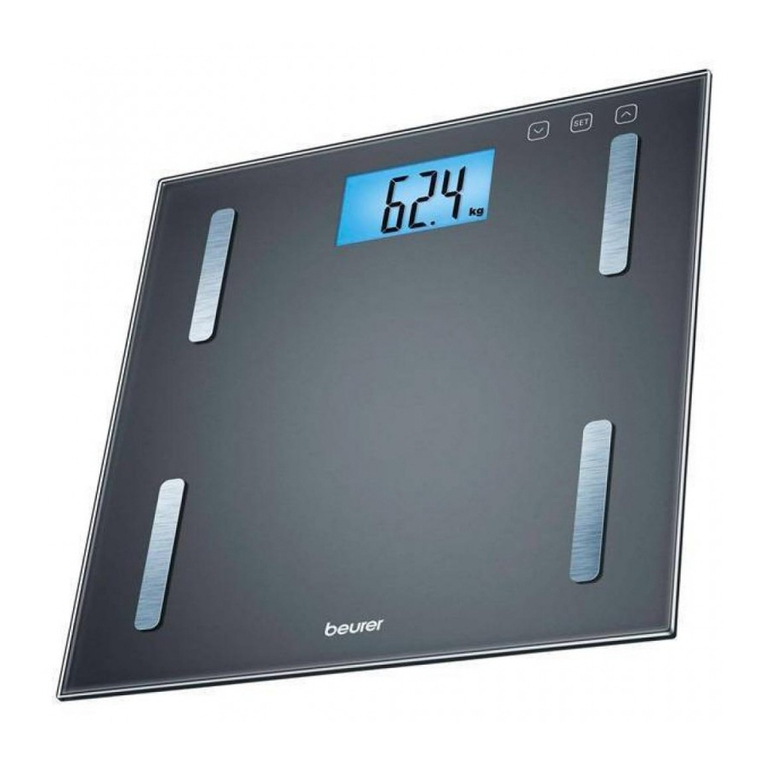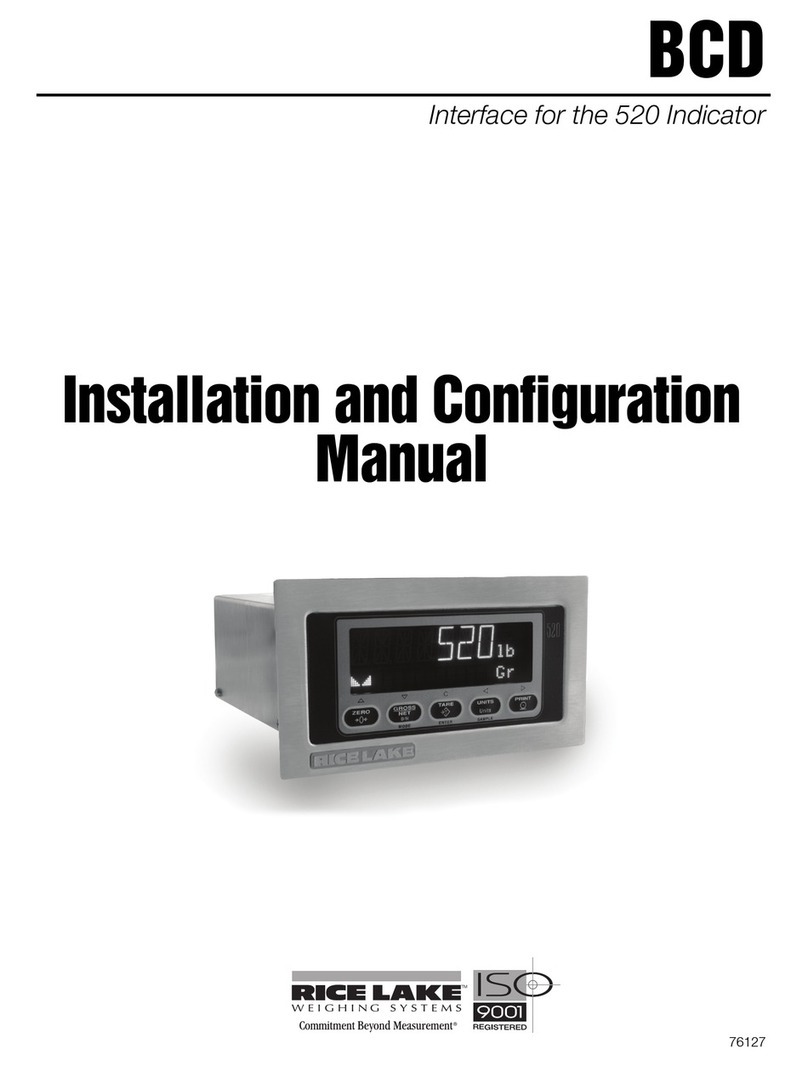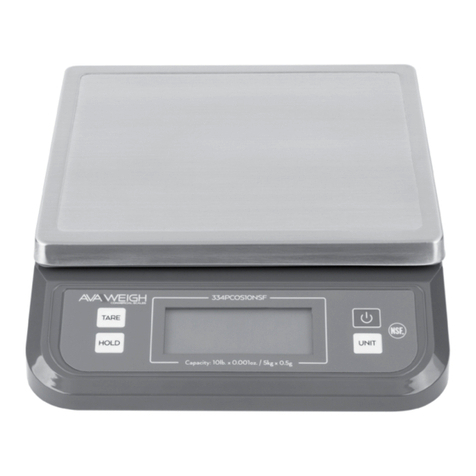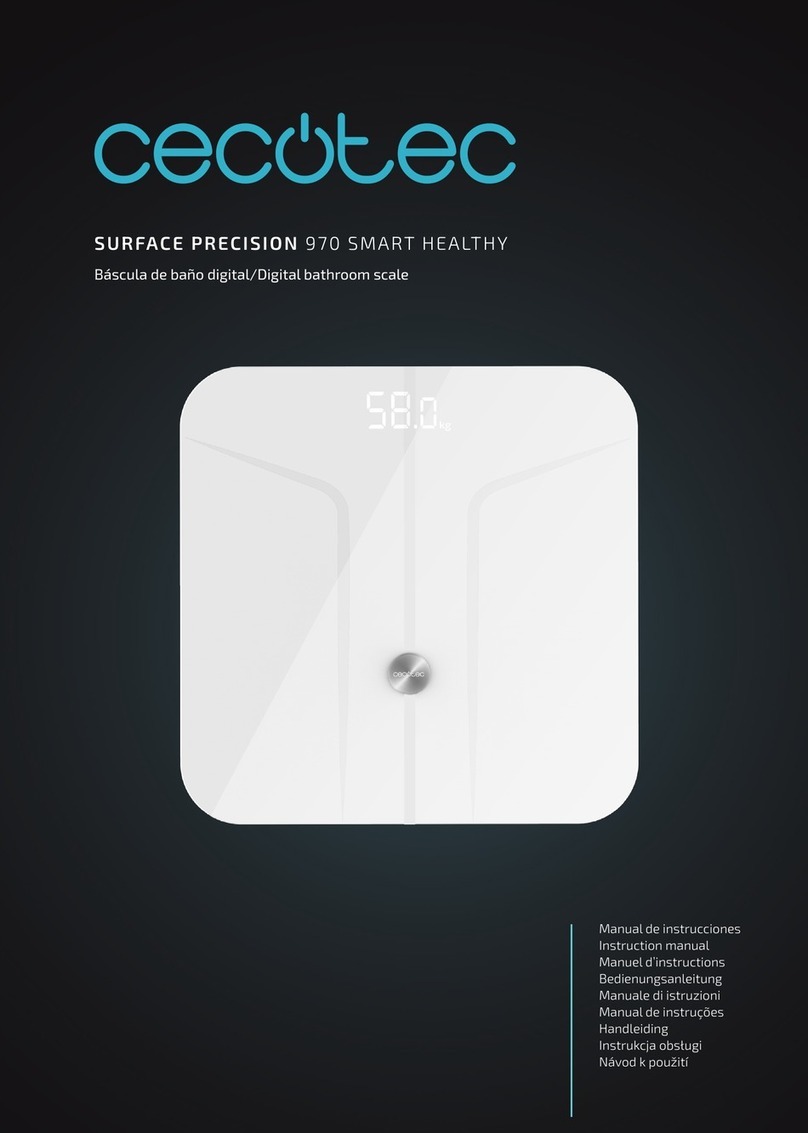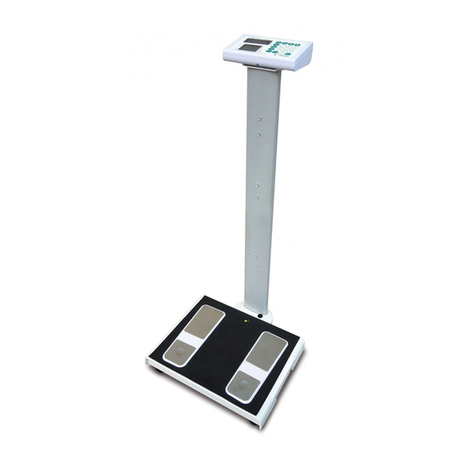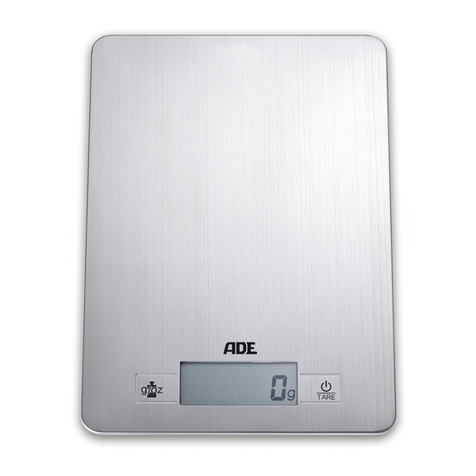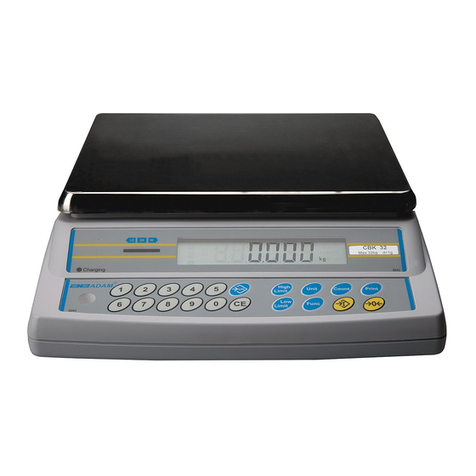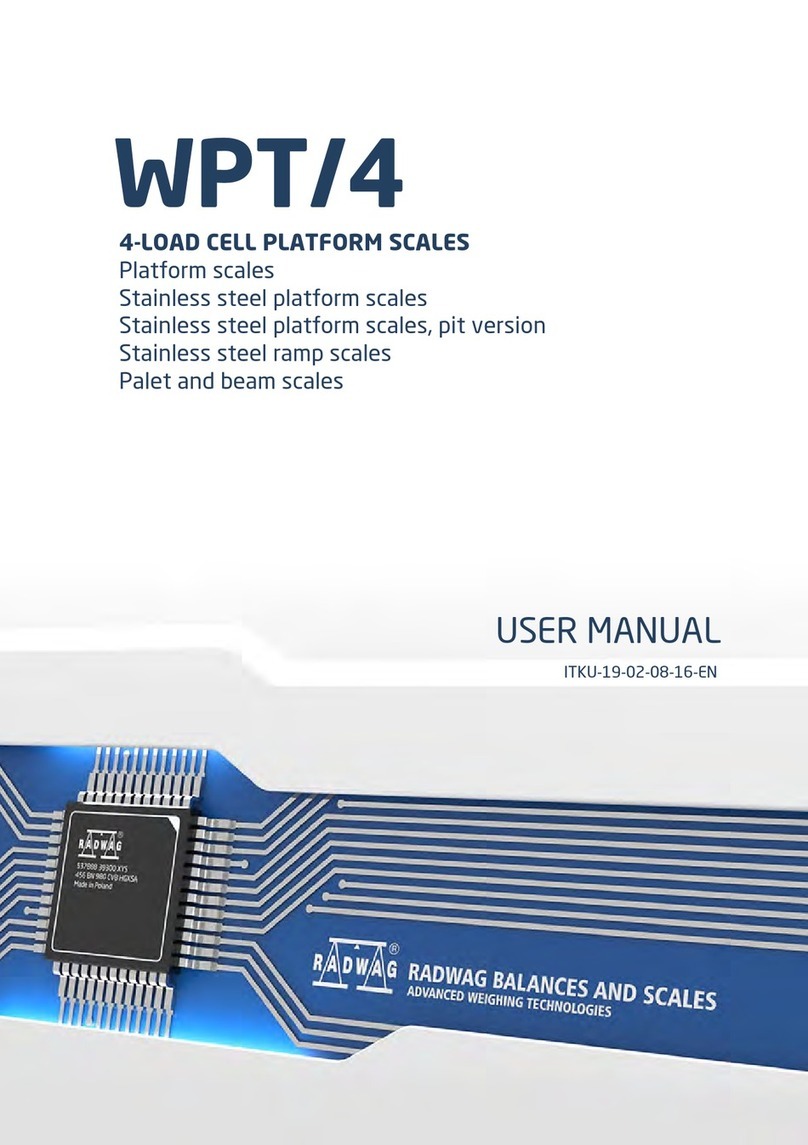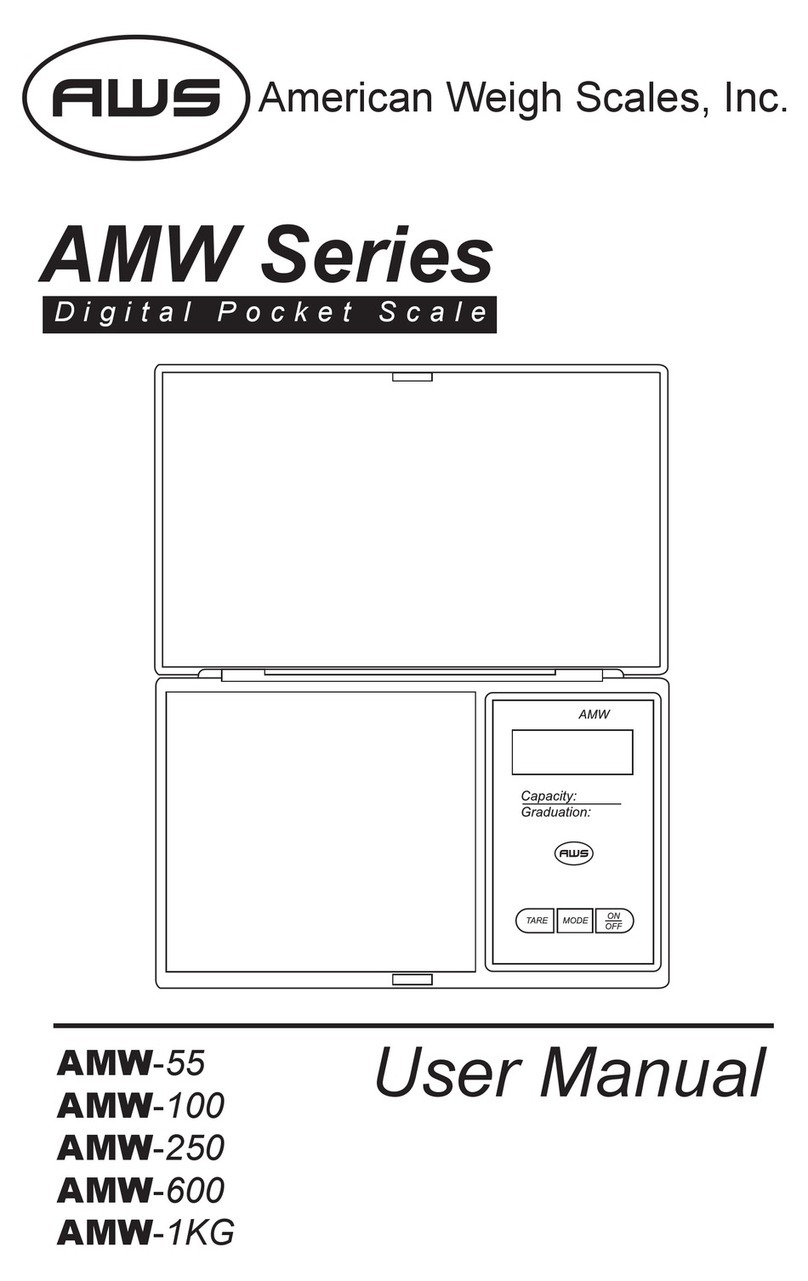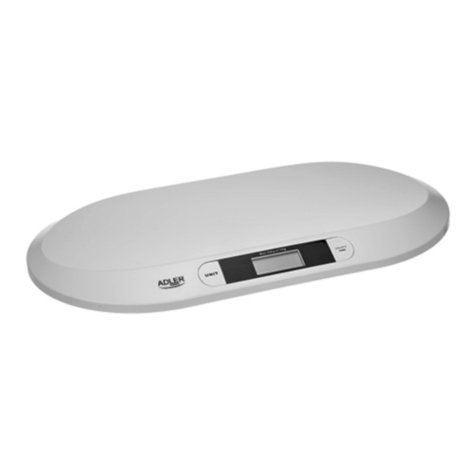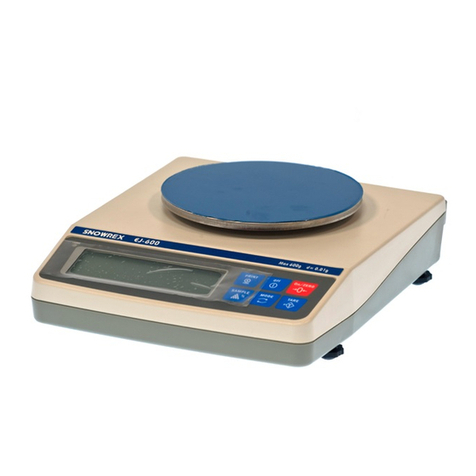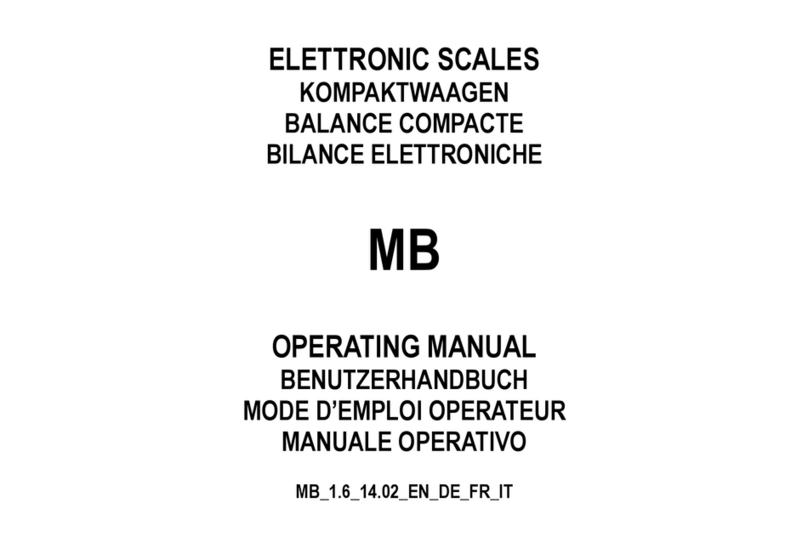Charder MS 6000 User manual

1
USER MANUAL
MS6000
Bed Scale
Please keep the instruction manual at hand all the time for future reference.

2
Explanation of Graphic Symbols on Label/Packaging
Caution, consult
accompanying documents
before use
Authorized
representative in the
European Community
Manufacturer of medical
device
Indicates that device
conforms to
International
Organization of Legal
Metrology (Class III)
requirements
Manufacturing year of
medical device
Indicates that device
conforms to
2014/31/EU Non
Automatic Weighing
Instruments Directive.
Numerals change
according to year of
manufacture. (ex: "19"
for 2019)
Separate collection for waste
of electrical and electronic
equipment, in accordance
with Directive 2002/96/EC
Indicates that device
conforms to 93/42/EEC
as amended by
2007/47/EC Medical
Device Directive. Four
digit number refers to
Notified Body.
Device catalogue number
Indicates that device
conforms to
2014/31/EU Non
Automatic Weighing
Instruments Directive.
Four digit number refers
to Notified Body.
Manufacturer's batch or lot
number
Indicates that device is
a medical device
Serial number
Carefully read user
manual before
installation and usage,
and follow instructions
for use.
Unique Device Identifier
Medical electrical
equipment with Type B
applied part

3
Copyright Notice
Charder Electronic Co., Ltd.
No.103, Guozhong Rd., Dali Dist., Taichung City 41262 Taiwan
Tel: +886-4-2406 3766
Fax: +886-4-2406 5612
Website: www.chardermedical.com E-mail: info_cec@charder.com.tw
Copyright© Charder Electronic Co., Ltd. All rights reserved.
This user manual is protected by international copyright law. All content is
licensed, and usage is subject to written authorization from Charder
Electronic Co., Ltd. (hereinafter Charder) Charder is not liable for any
damage caused by a failure to adhere to requirements stated in this
manual. Charder reserves the right to correct misprints in the manual
without prior notice, and modify the exterior of the device for quality
purposes without customer consent.
Charder Electronic Co., Ltd.
No. 103, Guozhong Rd., Dali Dist.,
Taichung City, 412 Taiwan

4
CONTENTS
I. Safety Notes .......................................................................... 5
A. General Information .............................................................5
B. EMC Guidance and Manufacturer's Declaration.........................8
II. Installation..........................................................................12
A. Setting up weight bridges ................................................... 12
B. Inserting Batteries ............................................................. 14
D. Using Adapter ................................................................... 17
III. Indicator............................................................................18
A. Indicator and Key Functions ................................................ 18
B. Display layout.................................................................... 19
IV. Using Device .......................................................................20
A. Performing measurement.................................................... 20
B. Hold ................................................................................. 21
C. BMI.................................................................................. 22
V. Advanced Operation .............................................................23
A. Pre-Tare............................................................................ 23
B. Weight Tracking & Alarm ..................................................... 25
VI. Device Setup.......................................................................28
A. Setting Time & Date ........................................................... 28
B. Device Setup ..................................................................... 29
VII. Setup USB Connection to PC ..............................................31
VIII. Wireless Connection ........................................................34
IX. Troubleshooting..................................................................35
X. Product Specifications ..........................................................38
A. Device Information ............................................................ 38
B. Power Adapter Standards.................................................... 39
XI. Declaration of Conformity ...................................................40

5
I. Safety Notes
A. General Information
Thank you for choosing this Charder Medical device. It is designed to be
easy and straightforward to operate, but if you encounter any problems
not addressed in this manual, please contact your local Charder service
partner.
Before beginning operation of the device, please read this user manual
carefully, and keep it in a safe place for reference. It contains important
instructions regarding installation, proper usage, and maintenance.
Intended Use
This device is intended to measure the weight of subjects with limited
mobility, for diagnosis of weight-related issues by professionals.
General Handling
Device should be placed on stable, flat, solid, non-slippery surface.
Usage on soft surfaces (ex: carpet) may result in inaccurate results.
Ensure all parts are properly locked and tightened before operating
the device.
Safety Instructions
Before putting device into use, please read this user manual carefully. It
contains important instructions for installation, usage, and maintenance
of device.
The manufacturer shall not be liable for damages caused by failure to
heed the following instructions:
Batteries should be kept away from children. If swallowed, promptly
seek medical assistance.
Expected service life: 5 years.
Always comply with appropriate regulations when using electrical
components under increased safety requirements.
Improper installation will render the warranty null and void.
Ensure voltage marked on power supply matches mains power
supply.
The device is intended for indoor use only.
Observe permissible ambient temperatures for use

6
Device meets requirements for electromagnetic compatibility. Do not
exceed the maximum values specified in the applicable standards.
Environmental
All batteries contain toxic compounds; batteries should be disposed
of via designated competent organizations. Batteries should not be
incinerated.
The optimum operating temperature for the device is 0℃to +40℃;
although it will operate at higher and lower temperatures, battery
life will adversely be effected.
Cleaning
Device surface should be cleaned using alcohol-based wipes.
Corrosive cleansing liquids should not be used. Pressure-washers
should not be used.
Do not use large amounts of water when cleaning the device, as it
may cause damage to the internal electronics.
Always disconnect device from mains power before cleaning.
Maintenance
Please contact your local Charder distributor for regular maintenance
and calibration.
Device does not require routine maintenance. However, regular
checking of accuracy is recommended; frequency to be determined
by level of use and state of device. If results are inaccurate, please
contact local distributor.
Warranty/Liability
If Charder is responsible for a fault or defect present upon receipt of
the unit, Charder shall either repair the fault, or supply a
replacement unit. Should the repairs or replacement delivery fail,
statutory provisions shall be valid. The period of warranty shall be
two years, beginning on the date of purchase. Please retain your
receipt as proof of purchase.
No responsibility shall be accepted for damage caused through any
of the following reasons: unsuitable or improper storage or use,
incorrect installation or commissioning by the owner or third parties,
natural wear and tear, changes or modifications, incorrect or
negligent handling, chemical, electrochemical, or electrical
interference, unless damage is attributable to negligence on the part
of Charder.
This device does not contain any user-maintained parts. All
maintenance, technical inspections, and repairs should be conducted

7
by an authorized Charder service partner, using original Charder
accessories and spare parts. Charder is not liable for any damages
arising from improper maintenance or usage. Dismantlement of the
device will void the warranty.
Disposal
This product is not to be treated as regular household waste, but
should be taken to a designated collection points for electronics.
Further information should be provided by local waste disposal
authorities.
Warning
Only the original adapter should be used with the device. Using an
adapter other than the one provided by Charder may cause
malfunction.
Do not touch the power supply with wet hands.
Do not crimp the power cable, and avoid sharp edges.
Do not overload extension cables connected to the device.
Route cables carefully, to avoid tripping.
Keep device away from liquids.
Do not remove the plug by yanking on the cable.
Use only a correctly wired (100-240VAC) outlet, and do not use a
multiple outlet extension cable.
Do not under any circumstances dismantle or alter the device, as this
could result in electric shock or injury as well as adversely affect the
precision of measurements.
Do not place the device in direct sunlight, or in close proximity to an
intense heat source. Excessively high temperatures may damage the
internal electronics.
Incident Reporting
Any serious incident that has occurred in relation to the device should be
reported to the manufacturer, EU representative (if device is used in EU
member state), and competent authority of user/subject's member state.

8
B. EMC Guidance and Manufacturer's Declaration
Guidance and manufacturer’s declaration-electromagnetic emissions
The MS6000 Bed Scale is intended for use in the electromagnetic environment specified
below. The customer or the user of the device should assure that it is used in such an
environment.
Emission test
Compliance
Electromagnetic
environment-guidance
RF emissions CISPR 11
Group 1
The device uses RF energy only for
its internal function. Therefore, its
RF emissions are very low and are
not likely to cause any interference
in nearby electronic equipment.
RF emissions CISPR 11
Class B
The device is suitable for use in all
establishments, including domestic
establishments and those directly
connected to the public low-voltage
power supply network that supplies
buildings used for domestic
purposes.
Harmonic emissions IEC
61000-3-2
Class A
Voltage fluctuations /flicker
emissions IEC 61000-3-3
Compliance

9
Guidance and manufacturer’s declaration-electromagnetic immunity
The MS6000 Bed Scale is intended for use in the electromagnetic environment specified
below. The customer or the user of the device should assure that it is used in such an
environment.
Immunity test
IEC 60601
test level
Compliance
level
Electromagnetic
environment-guidance
Electrostatic
discharge(ESD)
IEC 61000-4-2
±8 kV contact
±2 kV, ± 4 kV,
± 8 kV, ± 15 kV
air
±8 kV contact
±2 kV, ± 4 kV,
± 8 kV, ± 15 kV
air
Floors should be wood, concrete
or ceramic tile. If floors are
covered with synthetic material,
the relative humidity should be
at least 30%
Electrical fast
transient/burst
IEC 61000-4-4
± 2kV for
power supply
lines
+ 1kV for
input/output
lines
+ 2kV for power
supply lines
+ 1kV for
input/output
lines
Mains power quality should be
that of a typical commercial or
hospital environment.
Surge IEC
61000-4-5
± 1kV line(s) to
line(s)
± 2kV line(s) to
earth
+ 1kV line(s) to
line(s)
+ 2kV line(s) to
earth
Mains power quality should be
that of a typical commercial or
hospital environment.
Voltage Dips,
short interruptions
and voltage
variations on
power supply
input lines IEC
61000-4-11
0% UT for 0,5
cycle
0% UT for 1
cycle
70% UT(30%
dip in UT) for
25 cycles
0% UT for 5 s
0% UT for 0,5
cycle
0% UT for 1
cycle
70% UT(30%
dip in UT) for 25
cycles
0% UT for 5 s
Mains power quality should be
that of a typical commercial or
hospital environment. If the
user of the device requires
continued operation during
power mains interruptions, it is
recommended that the device
be powered from an
uninterruptible power supply or
a battery.
Power
frequency(50/60
Hz) magnetic field
IEC 61000-4-8
30 A/m
30 A/m
The device power frequency
magnetic fields should be at
levels characteristic of a typical
location in a typical commercial
or hospital environment.
NOTE UT is the a.c. mains voltage prior to application of the test level.

10
Guidance and manufacturer’s declaration-electromagnetic immunity
The MS6000 Bed Scale is intended for use in the electromagnetic environment specified
below. The customer or the user of the device should assure that is used in such an
environment.
Immunity test
IEC 60601 test
level
Compliance
level
Electromagnetic
environment-guidance
Conducted RF
IEC 61000-4-6
Radiated RF IEC
61000-4-3
3 Vrms
150 KHz to 80 MHz
6 V in ISM bands
between 0,15 MHz
and 80 MHz
80 % AM at 1 kHz
3 V/m
80MHz to 2,7 GHz
3 Vrms
150 KHz to 80
MHz
6 V in ISM
bands between
0,15 MHz and
80 MHz
80 % AM at 1
kHz
3 V/m
80MHz to 2,7
GHz
Portable and mobile RF
communications equipment
should be used no closer to any
part of the device including
cables, than the recommended
separation distance calculated
from the equation applicable to
the frequency of the
transmitter.
Recommended separation
distance:
d = 1,2 √P
d = 1,2 √P 80MHz to 800 MHz
d = 2,3 √P 800MHz to 2,5 GHz
Where P is the maximum output
power rating of the transmitter
in watts (W) according to the
transmitter manufacturer and d
is the recommended separation
distance in metres (m).
Field strengths from fixed RF
transmitters, as determined by
an electromagnetic site surveya,
should be less than the
compliance level in each
frequency rangeb.
Interference may occur in the
vicinity of equipment marked
with the following symbol:

11
NOTE1 At 80 MHz and 800 MHz, the higher frequency range applies.
NOTE2 These guidelines may not apply in all situations. Electromagnetic propagation is
affected by absorption and reflection from structures, objects and people.
a Field strengths from fixed transmitters, such as base stations for radio (cellular/cordless)
telephones and land mobile radios, amateur radio, AM and FM radio broadcast and TV
broadcast cannot be predicted theoretically with accuracy. To assess the electromagnetic
environment due to fixed RF transmitters, an electromagnetic site survey should be
considered. If the measured field strength in the location in which the device is used
exceeds the applicable RF compliance level above, the device should be observed to
verify normal operation. If abnormal performance is observed, additional measures may
be necessary, such as re-orienting or relocating the device.
b Over the frequency range 150 kHz to 80 MHz, field strengths should be less than 3 V/m.
Recommended separation distance between portable and mobile RF
communications equipment and the MS6000 Bed Scale
The device is intended for use in an electromagnetic environment in which radiated RF
disturbances are controlled. The customer or the user of the device can help prevent
electromagnetic interference by maintaining a minimum distance between portable and
mobile RF communications equipment (transmitters) and the device as recommended
below, according to the maximum output power of the communications equipment.
Rated maximum
output power of
transmitter
W
Separation distance according to frequency of
transmitter m
150 kHz to 80
MHz
d =1,2√P
80 MHz to 800
MHz
d =1,2√P
800 MHz to 2,5
GHz
d =2,3√P
0,01
0,12
0,12
0,23
0,1
0,38
0,38
0,73
1
1,2
1,2
2,3
10
3,8
3,8
7,3
100
12
12
23
For transmitters rated at a maximum output power not listed above, the recommended
separation distance d in metres (m) can be estimated using the equation applicable to the
frequency of the transmitter, where p is the maximum output power rating of the
transmitter in watts (W) according to the transmitter manufacturer.
NOTE1 At 80 MHz and 800 MHz, the separation distance for the higher frequency range
applies.
NOTE2 These guidelines may not apply in all situations. Electromagnetic propagation is
affected by absorption and reflection from structures, objects and people.

12
II. Installation
A. Setting up weight bridges
1. Place weight bridges under bed next to bed castors.
2. Device should be placed on non-slippery, flat,
hard, level surface. Make sure bubble level
indicator is centered to ensure result accuracy.
Bubble indicator: Level
Not level
3. Connect weight bridges. All pins should be connected slowly and
carefully to avoid damage.
Blue cable should be plugged into blue port; yellow cable should be
plugged into yellow port.

13
Note: connect both weight bridges to one another using weight bridge
connecting wire. Connect indicator to weight bridge 2 (blue port).
4. Turn on device.
5. After device is turned on, push bed onto weight bridges. Two people
may be needed to complete procedure.

14
Note: take care not to catch connecting cable under platform or bed.
B. Inserting Batteries
1. Open battery housing cover
2. Accessing batteries
3. Use either rechargeable battery pack, or AA batteries
Take out the battery
housing

15
4. Ensure batteries are installed into the housing correctly
5. Install the battery housing into the compartment, and make sure the
right side of housing pin is facing towards inside of the connecting position
Rechargeable
Battery Housing
AA-size Battery Housing

16
6. Slide back the cover to close the battery housing compartment. Turn on
power to confirm that battery is correctly installed.
Using Rechargeable Battery (optional)
The rechargeable battery should be recharged at least once every 3
months, regardless of if the device has been used. Battery can be charged
by plugging device's exclusive adapter into AC Connector Port.
After a long period in storage (e.g. >3 months), the battery should run a
full cycle (charge/discharge) to allow it to restore full capacity.
Ensure rechargeable battery housing is installed and inserted properly
into the compartment.
If prompt displays on the LCD, please charge battery
promptly to avoid battery damage.
AC Connector Port

17
D. Using Adapter
1. Connect adapter to indicator before connecting to mains power supply
2. Disconnect adapter from mains power supply before unplugging
adapter pin from indicator.
AC Connector Port

18
III. Indicator
A. Indicator and Key Functions
Key Function
1. ON/OFF: Power on or power off.
2. ZERO: Reset display to 0.0 kg display (can be used if within ±2% of
full capacity). Press and hold for 3 seconds to enter device settings.
3. M1-10: Save pre-tare values (up to 10)
4. PRE-TARE: Pre-tare the known weight of an object (ex: clothing)
before beginning measurement.
5. PRINT: When printer or PC is connected to the scale, press this key to
print results
6. MONITOR WEIGHT: Track change in patient weight
7. ALARM: Turn weight change alarm on/off, adjust volume of alarm
8. HOLD/BMI: Determine stable weighing value - used when weight is
unstable. Press and hold for 3 seconds to enter BMI mode.
9. 0-9: For entering digits.
10. CLEAR: Clear incorrect data input.
11. ENTER: Confirm input.

19
B. Display layout
Definitions
Stable symbol: Indicates that weight is stable.
Zero symbol: Weight is at zero
Minor weight: Weight under zero.
Low battery: Battery needs to be charged or replaced.

20
IV. Using Device
A. Performing measurement
Install weight bridges under the bed and connect all wires.
Switch on the device using [ON/OFF] key. The device will automatically
perform self-calibration, displaying software version. Once "0.00 kg"
appears on indicator, device is ready for measurement.
Note: If "0.00 kg" does not display on indicator, press [ZERO] key to
zero the device. This function can be used for weight within ±2% of full
capacity.
User can either select pre-tare bed weight, or deduct weight of bed at
point of measurement.
Using pre-tare bed weight (used when subject is already in bed):
1. Recall previously stored Pre-Tare
value (bed weight) from device
memory by pressing and holding
[M1-10] key for 3 seconds.
Indicator will display pre-tare value
M1 first. The pre-tare value will
flash.
2. Press numeral keys 0~9 to select
pre-tare value. Press [ENTER] key
to confirm selection.
(for instructions on how to set
Pre-Tare, please refer to Setting
and Recalling Pre-Tare.
Scale will deduct weight of bed, and
minus (-) sign will appear in front of
Pre-Tare value.
3. Push bed (with subject) onto
weight bridges. Conduct
measurement.
Other manuals for MS 6000
1
Table of contents
Other Charder Scale manuals
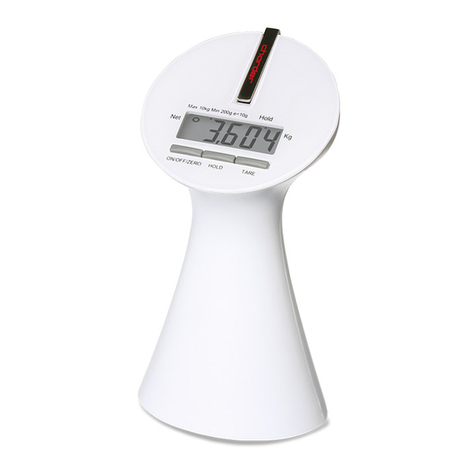
Charder
Charder MS4400I User manual
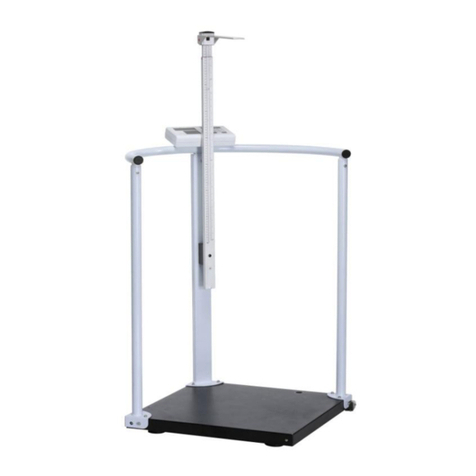
Charder
Charder MS2504 User manual
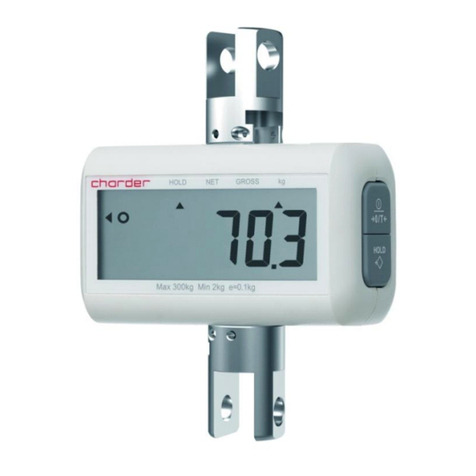
Charder
Charder MHS2710 User manual

Charder
Charder MS 4600 User manual
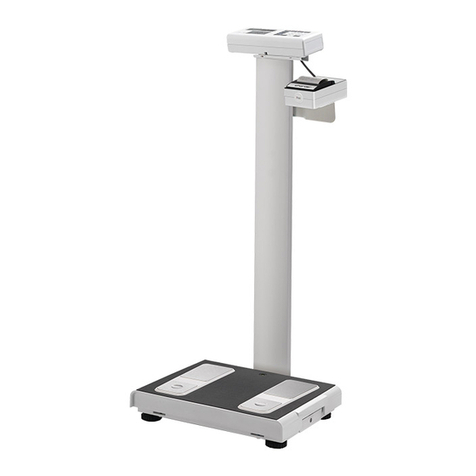
Charder
Charder DP3700 User manual
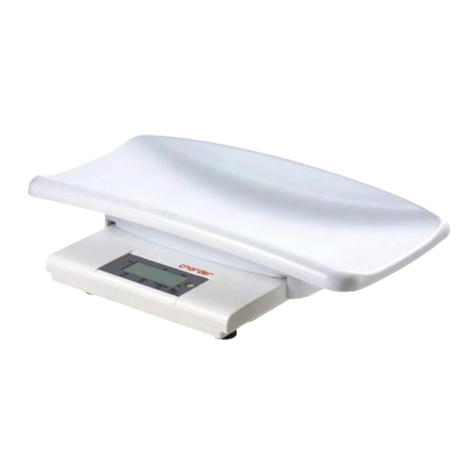
Charder
Charder MS4200 User manual
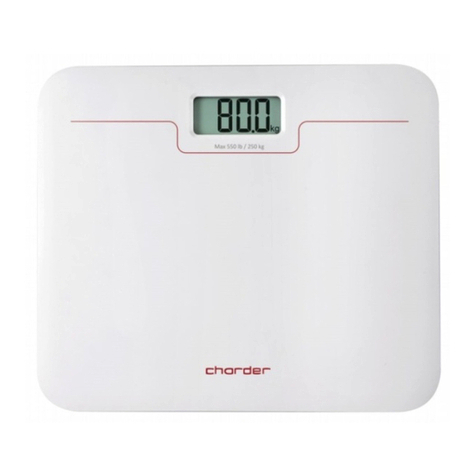
Charder
Charder MS7321 User manual
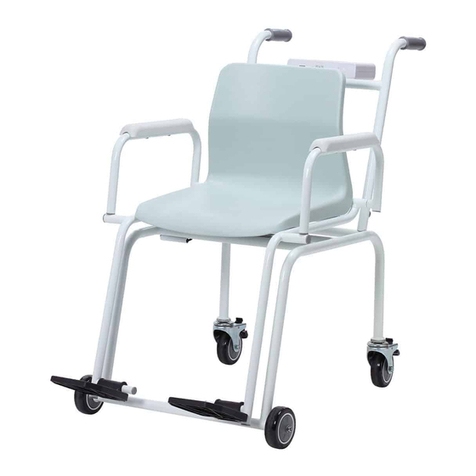
Charder
Charder MS5810 User manual
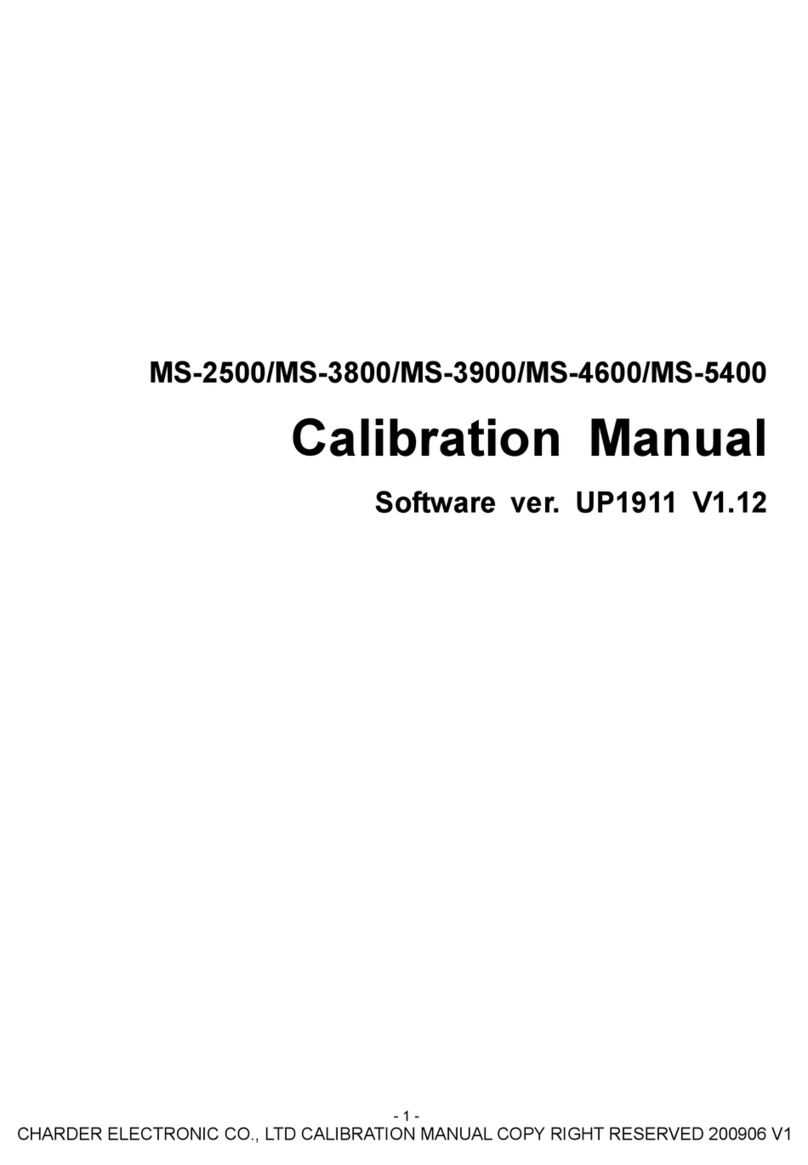
Charder
Charder MS2500 Use and care manual
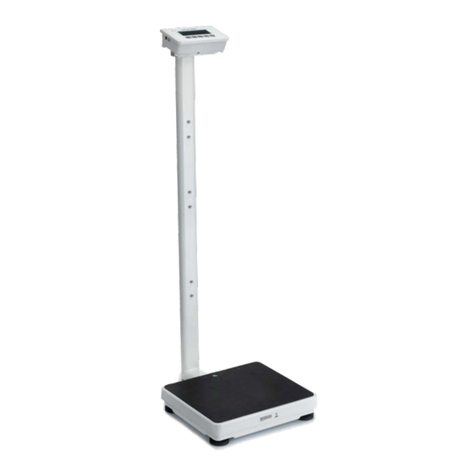
Charder
Charder MS4970 User manual

Charder
Charder W330 User manual

Charder
Charder MS7321 User manual
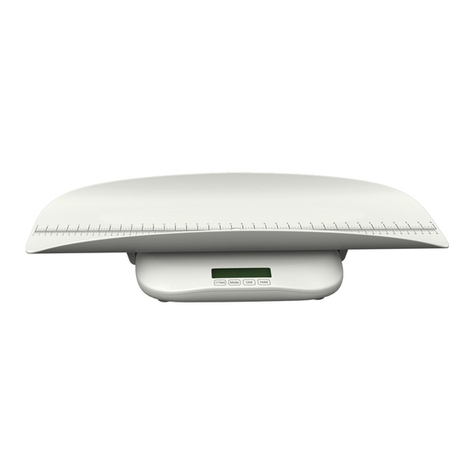
Charder
Charder CUPID 3 User manual
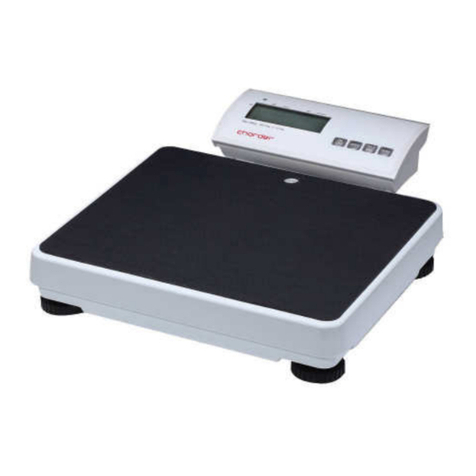
Charder
Charder MS5711 User manual
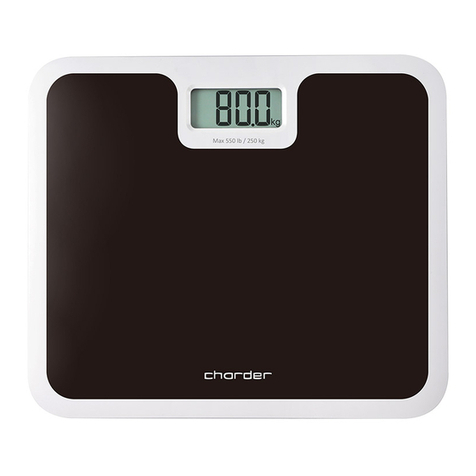
Charder
Charder MS7301 User manual
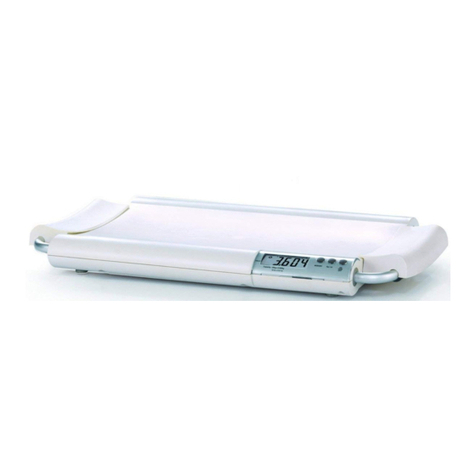
Charder
Charder MS 2400 User manual
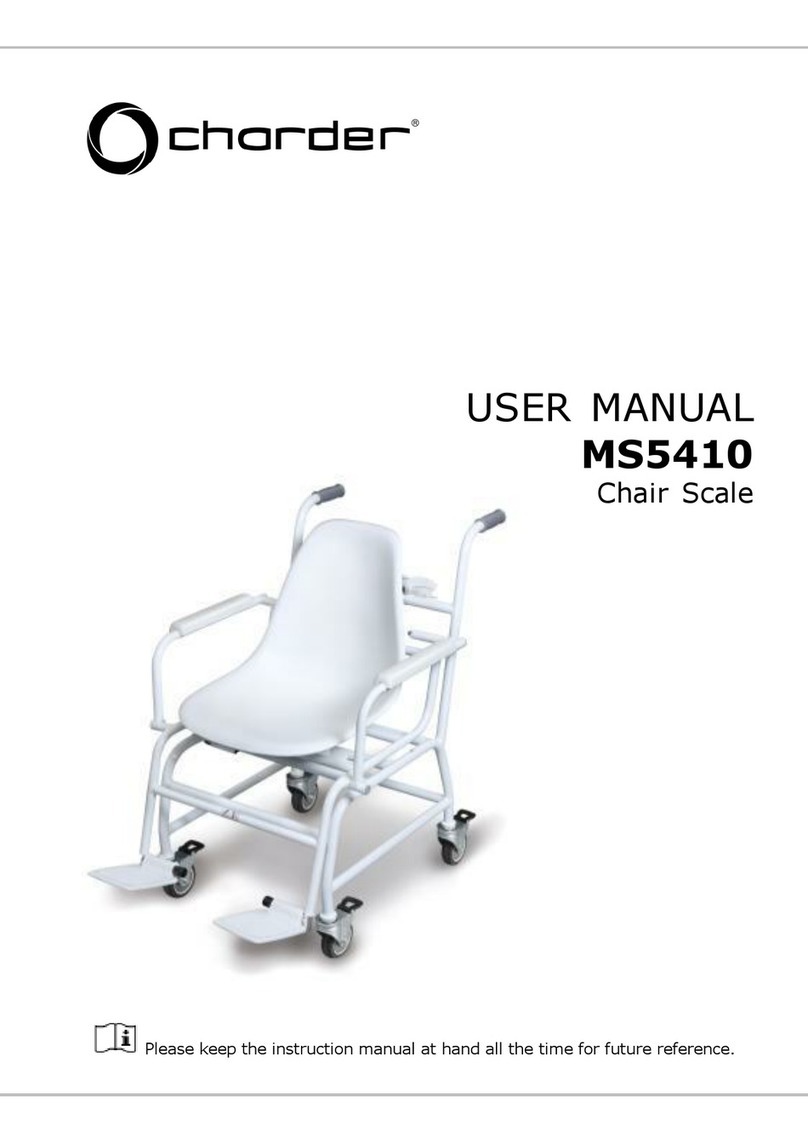
Charder
Charder MS5410 User manual
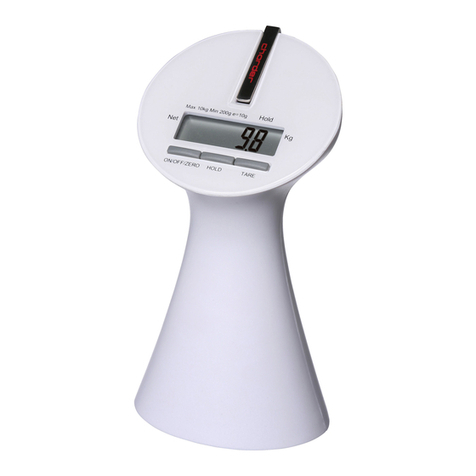
Charder
Charder MS4400 User manual
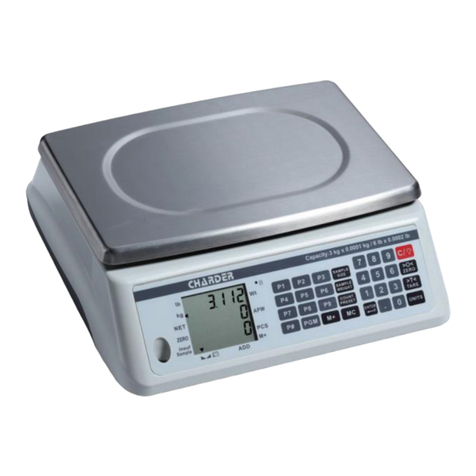
Charder
Charder P520 User manual

Charder
Charder MS4200 User manual

